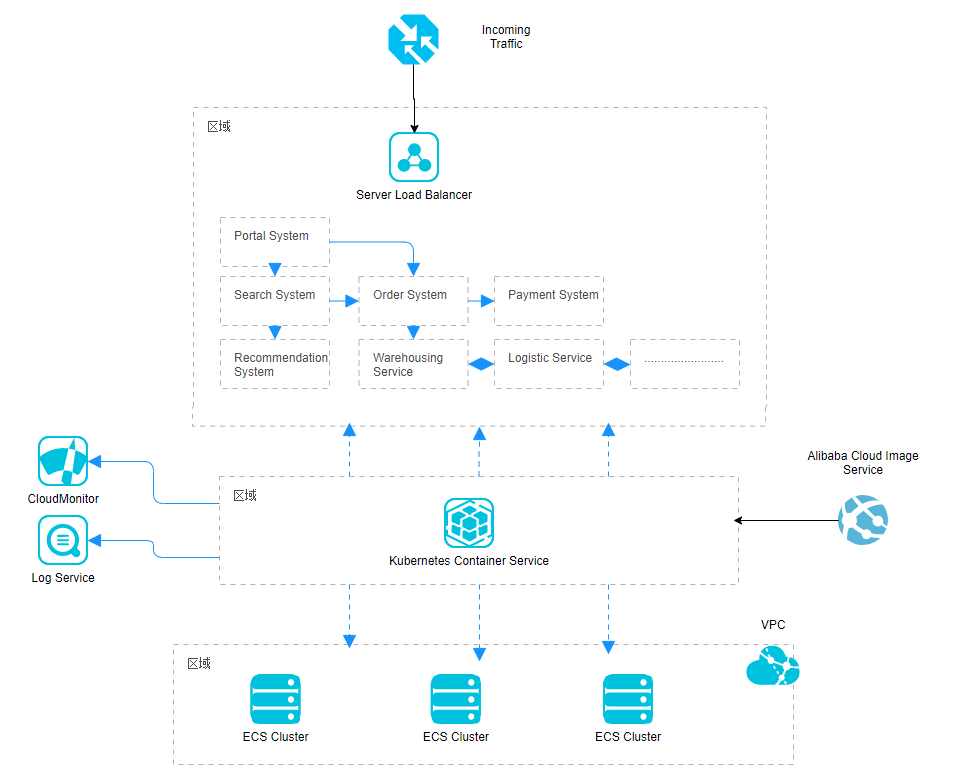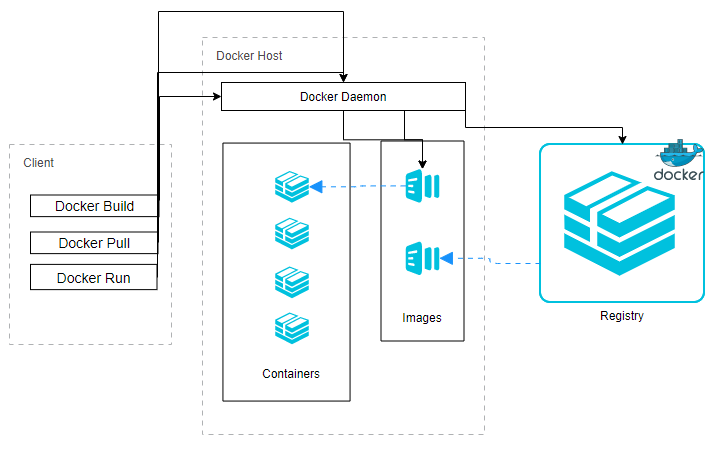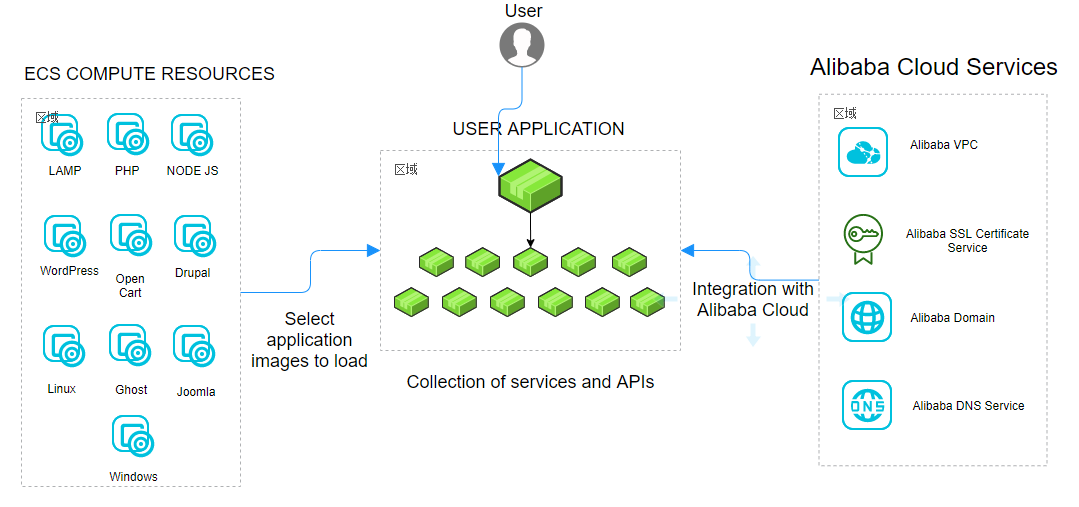Raghav K.
The last decade gave birth to many technologies and applying them to build and evolve is essential for the organization’s future. The evolution of these technologies has created a niche for itself in the changing environment. In a traditional setting, developers were dependent on the host environment, but today, with cloud computing, there is a standardized way to code, build, and deploy.
Traditional environment and platforms faced many challenges; developers were ridden with platform dependencies, testers had no standardized testing environment, and the production environment varied from technology to technology. After all of this, teams in charge of operations were not in sync and were practically disconnected from developers and tester. This presented a big challenge for system administrators. They had to manually provide configuration and data for the production software, and when the deployment panned multiple systems, it was practically impossible to keep track of it.
In Part 2 of this blog series, I will outline some of the aspects and stakeholders of the current DevOps pipeline and discuss how the future will hold for these practices within DevOps.
A successful platform enables collaboration and automation at its core, just like an organization can achieve greater success with predictability and transparency between departments. Successes are notable, but failures should be counted as valuable learning tools.
Alibaba Cloud and their in-house research team have perfected multiple solutions that cater to different enterprises. Automation tools, process continuity tools, metrics collection tools, and reporting tools ensure that your organization can take advantage of continuous learning for continuous improvement.
Collaboration between teams is increasing, but it needs to increase further. The future could see a team that isn’t stream specific. As new projects start to roll out, architects will think about building and deploying before thinking about re-architecting a project.
A more pragmatic approach is expected to grow when it comes to dealing with intelligent build automation. It is necessary to focus on this before the cloud or microservices come into the picture.
Infrastructure as Code (IAC) presents us with a set of deployment tools without worrying about anything at the backend. Moving forward, users will take care of a lot less dependencies. With more advancements within DevOps, ultra-fully managed models will take over the present Platform as a Service (PaaS) model. It is difficult to comprehend what could come after Software as a Service (SaaS), but shifting the complete deployment model to cloud providers is a possibility.
Containers have opened up a lot of possibilities in terms of revamped architecture. The surrounding architecture has an isolated environment that keeps it away from every external factor.
Containers provide deployment mobility and flexibility by controlling what libraries are being used and what resources they need. This gives more control with reliability since one service will not affect another.
Machine Learning and IoT are two more solutions that provide a similar set of practices with ever-increasing productivity. There’s a massive influx of data and information flow, so thinking about storage and in a usable format is a primary concern.
The global distribution of this data will notice a significant improvement in the future. Different countries have multiple rules in development that decide how data is stored. With global expansion, it is imperative to cater to and standardize data delivery in various physical locations for international customers.

Containers will continue to provide better opportunities as the open-source community creates more defined methods and tools. This should confer a lot of benefits for enterprises and overcome many downsides of a system. There are a lot of ideas that need more development. Many new functionalities can surface that will provide significant benefits.
Containers are usually treated like individual components; it should be utilized more like a runtime environment. Generating an application container per user session could provide boundless opportunities to improve resource security, user security, and to understand user and system behavior using analytics.
As the tools improve, containers will become more efficient with deployment and help traditional industry verticals improve their businesses. Tools, such as Kubernetes and Docker, will continue to grow and offer more upgrades to DevOps.

The future of DevOps will include the increased deployment of microservices and the implementation of a service mesh architecture to manage and monitor microservices. Moving forward, tech professionals will increasingly need to develop a good understanding of the breadth and depth of service mesh necessary for their environment and choose the right tool to fit their needs.
The future of DevOps runs parallel to serverless computing. One has to determine the applications of serverless computing and its appropriate use with the distributed environment. With its integration, DevOps teams can enable their organizations to make strategic decisions and lead them to digital transformation.
For DevOps to grow, the network growth must be scaled with a vision to provide better time to service. Traditionally, the network isn’t designed for the specific needs of the application, and it does not affect any change in deployment.
When it comes to the Operations Team, the operations or the processes that repeat are not the primary focus. Even the operations state of the environment and the tools are in their infancy. These tools will grow and provide better functionality in the future.
DevOps has brought synergy to various teams and has particularly benefitted developers in terms of software development. However, developers should continue to expand their expertise and take on added responsibilities. DevOps defines the roles and responsibilities of developers, but these roles and responsibilities have to change to adopt a mixed culture that facilitates more understanding and reach in a project.
Independent tools make DevOps an autonomous practice. Kubernetes is independent of the cloud, integration is not dependent on delivery, and the whole system is not dependent on security. The future will have a more holistic and embedded approach with automation and validation as standard practices.

With the SRE model, the future might combine the Operations Team or operators with developers. Containers will adjoin the development process with the deployment process and make the team role distribution a combined process.
Today, within the DevOps environment, containers lead the industry as technology professionals focus more on managing containerized workloads at an enterprise scale. They can leverage containers in production to maximize workload distribution. DevOps teams are more capable with containers and microservices to shift swiftly shift to the future of DevOps.

2,599 posts | 765 followers
FollowAlibaba Clouder - December 28, 2020
Alibaba Clouder - December 3, 2018
Alibaba Clouder - September 2, 2020
Alibaba Clouder - November 2, 2020
Aliware - July 27, 2020
Alibaba Clouder - February 24, 2021

2,599 posts | 765 followers
Follow Alibaba Cloud Flow
Alibaba Cloud Flow
An enterprise-level continuous delivery tool.
Learn More DevOps Solution
DevOps Solution
Accelerate software development and delivery by integrating DevOps with the cloud
Learn More Microservices Engine (MSE)
Microservices Engine (MSE)
MSE provides a fully managed registration and configuration center, and gateway and microservices governance capabilities.
Learn More Function Compute
Function Compute
Alibaba Cloud Function Compute is a fully-managed event-driven compute service. It allows you to focus on writing and uploading code without the need to manage infrastructure such as servers.
Learn MoreMore Posts by Alibaba Clouder